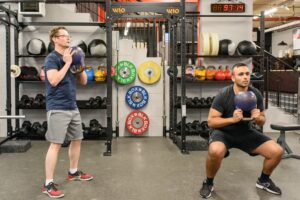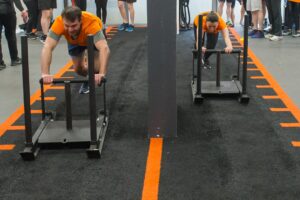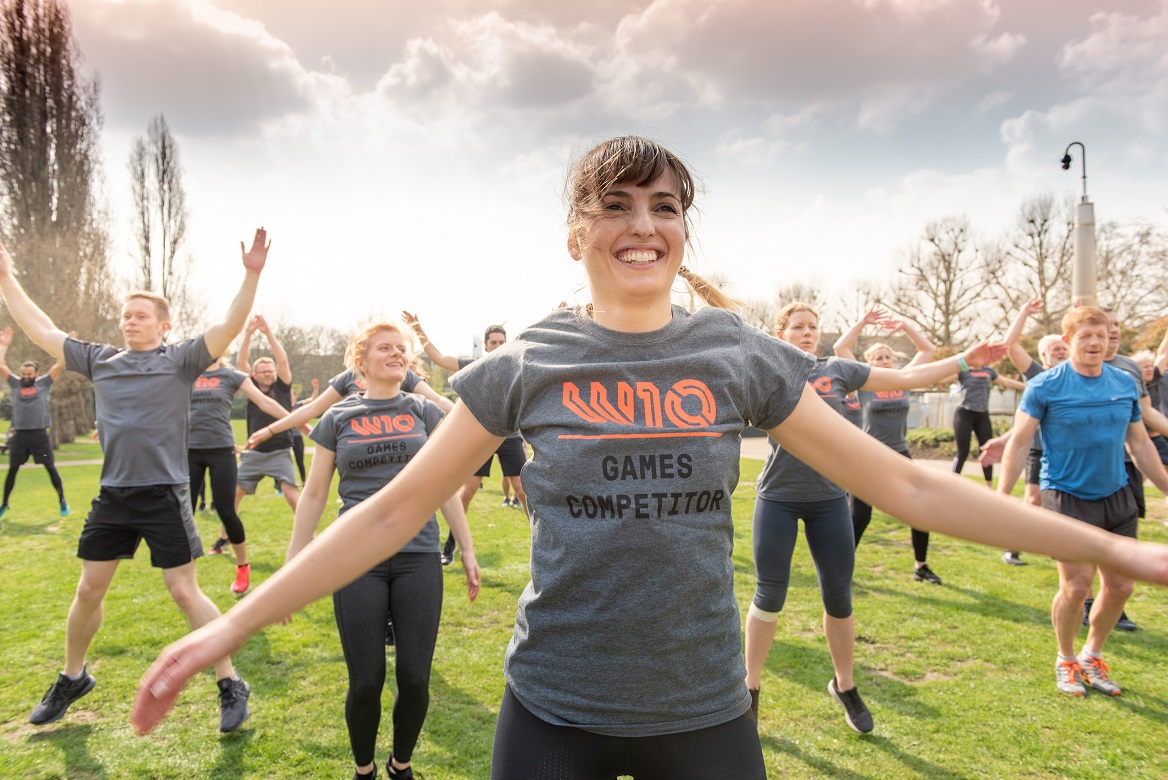The fitness industry is a huge business that is saturated with images of beautiful creatures endorsing the latest diet, workout or nutritional super-food.
Just like the myth that the earth is flat, which even has its own support group, aptly named ‘The Flat Earth Society’, there are fitness myths out there that people still believe in following.
There’s the promise of fifteen-minute fat loss workouts. Two-minute routines to get you abs and the most recent revolutionary programme which is guaranteed to get you in shape in just four weeks. In this information-rich day and age, it’s hardly surprising that many of these myths continue to do the rounds and influence people.
If you’re reading this, then it’s a good sign that you’re open to learning why many of the myths below are precisely that, along with the truth to dispel these beliefs.
Fitness Myths and Truths
If you’re reading this, then it’s a good sign that you’re open to learning why many of the myths below are precisely that, along with the truth to dispel these beliefs.
Myth 1. High reps are for toning and losing fat, and low reps are for building muscle.
Many people believe that to achieve either of these goals your training must be exclusive to one of these approaches.
The Truth:
You can lose fat and build muscle through a variety of reps and loads. Whether its building muscle, losing fat and or having a toned body. It’s not necessarily the number of reps or weight that is used to burn the most fat, but the intensity of the workout that defines the effect. You have to push yourself to force your body to adapt. For most people using a variety of reps in the 5-20 range will be useful for fat loss. Using a weight that becomes challenging for the last 1-2 reps and perhaps the occasional set to failure.
The more important truth to this myth is that nutrition will have a far more significant impact on how much fat you lose compared to the rep range, weights or the type of training method you use. For example, if you eat fewer calories than you burn, you can lift heavy weights for low reps and most likely not gain any muscle while losing fat.
Myth 2. You can spot reduce areas with targeted exercises.
There are claims that by performing exercises that target specific muscles you can reduce fat in that specific area, such as performing abdominal movements in the effort to lose belly fat.
The Truth:
You cannot burn fat in a particular area by doing exercises that try to isolate that body part. Doing crunches will not target fat that is stored around the abdominals, for example. It’s worth noting also that a toned stomach will only show if your body fat is low. While perhaps beneficial for reasons such as muscular strength and stability, isolation movements like crunches and planks do very little for fat burning around the stomach. They don’t cause enough metabolic disturbance, which is crucial in forcing the body to change.

Myth 3. Squats are bad for your knees
Has anyone ever told you squats hurts their knees? Probably. This myth stems from a combination of anecdotal evidence of fellow gym goers, who find squats hurt them and a study dating back to the ’60s (which has since been disproved multiple times).
The Truth:
Now there may be a genuine reason as to why squats hurt your knees; previous injuries and your anatomical make up, even then there are a ton of variations that you can try which may work for you. If you have no issues, then squats can be a great exercise choice. There is no reliable research that proves squats are bad for knees; in fact, the research that is out there highlights the benefits of performing the squat pattern.
The more common issue of why people find squats hurt their knees tends to be down to either poor technique or a lack of mobility coupled with working in a range of movement they cannot control safely resulting in pain. Done correctly with proper technique, in a range of movement you can control, you shouldn’t get any knee issues, and you will reap the benefits of squatting. As a bonus, another myth to be debunked is that deadlifts hurt your back. Deadlifts are great for building back strength. It’s when they are performed wrongly that people get hurt. The same principles apply here as they do the squat, nail your technique, train in ranges you can control along with weights that are manageable.
Myth 4. Eating carbs makes you fat
Eating carbohydrates such as bread, rice, pasta, potatoes, and other carbohydrates all cause you to gain fat regardless of portion sizes.
The Truth:
Carbohydrates or any other macronutrient (Protein & Fat) individually do not make us fat. Overconsumption of food is what makes us fat. The reason carbs get this bad rap is that carbohydrate foods tend to be highly palatable foods especially when they are combined with fat, sugary snacks like chocolate, crisps, biscuits, cakes, bread with butter, pizza, etc.
If we are trying to lose weight and we cut these foods from our diet, we then lose weight and put it down to the fact that we stopped eating carbs. We could have done this with protein also, given that the calorie load per gram is the same for protein as it is for carbohydrates. It is not necessarily the cutting of carbs per se that has caused us to lose weight, but rather the reduction of overall calories.
Unless someone has specific issues, we should not avoid certain food groups. These food groups enable us to get a wide range of nutrients, not to mention that it would be much easier psychologically, with no restriction or elimination of any particular food. A successful diet approach should include all the major food groups in a balance that is conducive to your goals.
Myth 5. Superfoods are the answer to your diet
Adding superfoods to your diet will instantly solve your weight and fat loss problems all because of the high nutritional values of these foods.
The Truth:
A quick google search of this buzz word led me to this answer “a nutrient-rich food considered to be especially beneficial for health and well-being”. I could list 100’s of foods that could fall in that category, an apple spring to mind but it doesn’t quite carry the same marketing buzz as ‘Mongolian Chia seed extract’.
Superfoods may be high in nutritional values (providing a variety of vitamins & minerals), but it is a term that has been developed to help increase income for companies rather than being a holy grail for your nutrition without addressing the fact you overeat.
So, while some of these foods have genuine nutritional values, they are not necessarily better than other foods that do not carry the ‘superfood’ tag. Including superfoods within your diet may be beneficial but don’t overlook all the other highly nutritious foods that fall outside of this label. Remember, regardless of what you put into your mouth, without understanding the laws of energy balance it doesn’t matter what you put in your mouth.

Myth 6. You must do cardio to lose fat
If you do not add cardio to your routine it’s going to be impossible for you to lose fat using only strength training.
The Truth:
Successful fat loss will be mainly down to your diet, not solely your cardio approach. Through our personal training programmes, we’ve helped our West London gym members get themselves into great shape without doing any traditional cardio – some with absolutely no form of cardio whatsoever. It’s one tool in your armoury, but it’s not the only way, and it’s certainly not the most efficient way. What works for one of our people will not always work for another. It is impossible to say that one training method always trumps another for a specific goal. But if we were going to do a simple hierarchy of fat loss it would probably look something like this:
1. Nutrition
2. Resistance training
3. Daily activity
3. Interval training
4. Steady cardio training
Myth 7. If you’re not sore the day after training, you didn’t work hard enough
Judging the quality of workouts by how sore you are the next day is the way to decide if your workout was productive or not. If you’re not sore, then you didn’t do enough.
The Truth:
If you have participated in any form of exercise for the first time, it’s highly likely the day after you experienced some degree of muscular soreness also known as delayed onset muscle soreness (DOMS). Any time we place a demand on our body that it’s not used to, we may experience some soreness the following day. The more we repeatedly perform an activity, the better our body becomes at adjusting to these demands. So, what does this soreness mean? Well, the evidence is that it doesn’t mean much at all in terms of progress, it may also mean that you’re not adequately recovering after your workouts with proper nutrition and stress management.
If being sore the next day from the gym is how you rate the quality of your workouts then here is a tip; Do something completely different each time you go to the gym, use excessively slow tempos when lowering the weights and perform at least 100 reps on at least ten exercises. You might not be able to walk up the stairs the next day, but I guarantee you will be sore, unable to train for the next five days because of this soreness but that’s good for progress, right? Wrong, please don’t do the above.
Training smart and rating the quality of workouts by both objective (did you lift more, was your technique solid, how was your performance?) and subjective (Did you feel strong, fit and energised, etc.). Measures over a long-term period are better for judging the quality of your training, rather than your ability to walk correctly the next day.
Myth 8. Lifting heavy weights make you bulky
If you lift heavy weights often, you will gain muscle very quickly and then start to get big like a bodybuilder.
The Truth:
This is one that is slowly getting beaten away, but it’s hanging on. This is a common objection to weight training. The simple truth is, lifting weights is not going to make you bulky unless you make a huge specific nutritional push and spend a lot of time in the weight room, purposely trying to do so.
If it was as simple as lifting heavy weights for a few months to get big, why are so many people in the gym, who are lifting ‘heavy’ weights not huge like the incredible hulk? I’m sure plenty of people wish it were as easy as picking up some heavy weights and ‘BOOM’ they suddenly gain a load of muscle.
The hormonal conditions necessary for gaining large amounts of muscle mass aren’t present in most of us. Not to mention that we are often well short on sleep and other recovery strategies essential if we want to build our bodies. Yes, you might gain some muscle if you train with weights, a small amount, but the effects are positive: improved posture, a trimmer silhouette, structural balance, reduced risk of injury, increased fat loss and an overall increase in your functional strength.

Myth 9. Women and Men need to train differently
Women need to lift light weights and perform different exercises to men because their bodies are different.
The Truth:
Sure, there are considerations that are unique to women such as hormonal fluctuations, but the principles of successful training are the same for both sexes. There is no reason why women should train fundamentally differently to guys.
They should if they want to look firm and toned, train the same way that guys train. We can delve into the details and highlight how women may be able to recover quicker and can potentially handle more workload, but this is still going to be within the same fundamental training principles as men.
Myth 10. You need to train every day to be in good shape
You must be in the gym every day if you want to get in shape. This is what all the people that are in shape do seven days a week.
The Truth:
Sorry to the fitness fanatics but this is not true. You can if you wish, but it’s not necessary. Hundreds of our West London gym members get great results from three to five personal training sessions per week, which seems to be the sweet spot for our members to not to have to spend their lives in the gym to achieve their fitness goals.
To train in the gym every day places a considerable demand on your body and is not necessary. Even elite athletes whose careers are built around training have days off. Some quick science, when we train, we break down our muscle tissue, outside of training our body is rebuilding this tissue to come back stronger. This is why recovery between sessions is important. You need to give your muscles time to recover.
To conclude, we definitely promote the idea of being active every day, This doesn’t have to be in the gym, going for walks, taking the stairs, playing a sport or even chasing the kids around the park can all help to add some ‘invisible’ training that will have a positive effect on your fitness goals without the need to live in the gym.
Our mission is to help people live their best lives outside of the gym by providing the best possible standards of personal fitness training in the gym.
Related Articles
- 10 Body Myths Debunked
- The Core Training Myth
- Are You Wasting Your Time Doing Pointless Exercises in the Gym?
- The Truth About Female Fat Loss
- Fitness Truths: 5 Essential Fitness Rules

